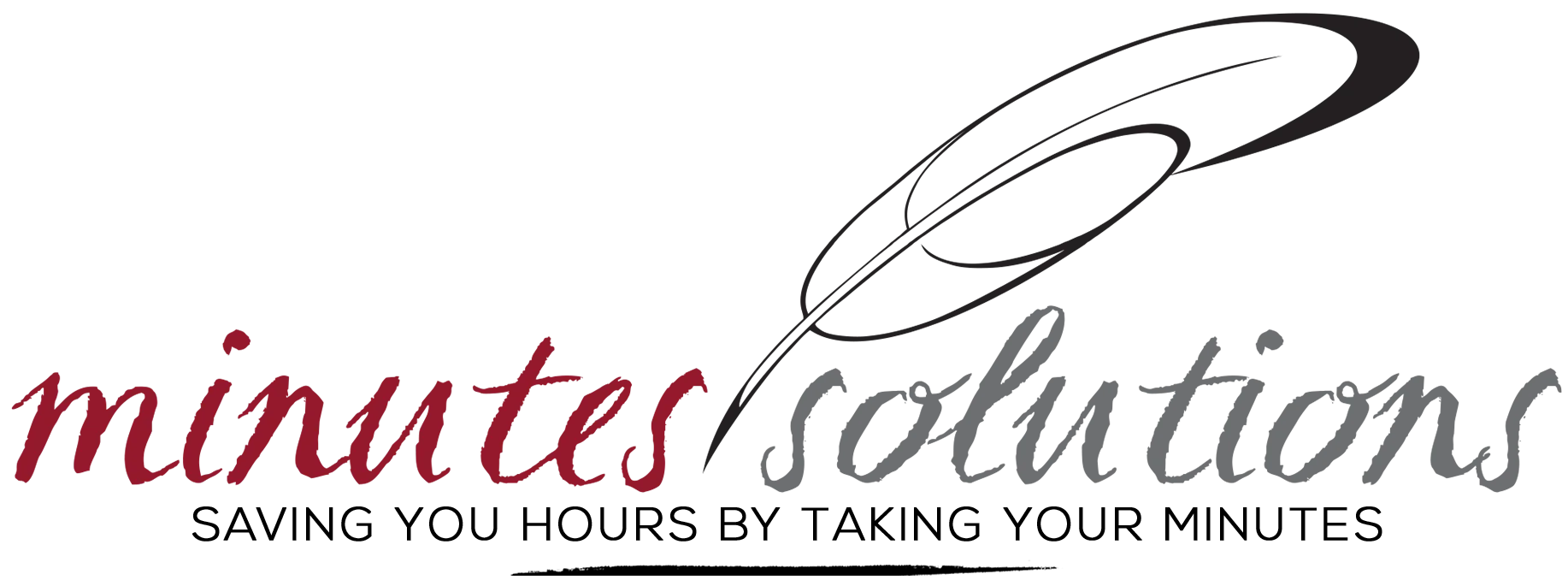Meetings play a pivotal role in decision-making, idea generation, and team alignment. A vital component at the center of these interactions is meeting minutes. These seemingly straightforward documents form the foundation of organizational memory, capturing the core of conversations, consensus, and action items. Meeting minutes are a cornerstone for every organization, whether corporate entities or community associations, crucial for reaching resolutions and tracking progress.
As boards often find themselves delving into the intricacies of past deliberations or judgments, the necessity of reviewing meeting minutes becomes apparent. However, this task can become cumbersome, particularly if the minutes are improperly transcribed or challenging to recall. Learning how to take minutes effectively, therefore, proves important for any organization.
Minute-taking can be a daunting task, but it is also crucial. Keeping a fair and unbiased record of decisions can go a long way toward
Understanding the Purpose and Significance of Minutes
To comprehend how to take minutes effectively, it’s crucial to recognize their multifaceted role. Meeting minutes serve as more than just records; they encapsulate the essence of meetings, providing a tangible reference for understanding discussions, decisions, and follow-up actions.
While the task of minute-taking may seem daunting, it is undeniably crucial. Crafting meaningful minutes isn’t solely about transcribing dialogue; it’s an art that demands precision, clarity, and a profound understanding of the meeting. Maintaining a fair and unbiased record of decisions significantly contributes to reinforcing a proactive relationship between the board, management, and all participants.
The Art and Science of Minute-Taking
Minute-taking is a nuanced blend of both art and science, amalgamating structured methodologies with subjective interpretation and effective communication. Scientifically, it involves systematic recording, standardized formats, accuracy, and adherence to compliance standards. It demands technical proficiency and objective representation, ensuring the accuracy and legality of the recorded information.
However, the art of minute-taking lies in selective interpretation, clarity in communication, and contextual understanding. It involves distilling discussions into clear, concise records, capturing not just words but also the essence and implications behind them. The minute-taker must adapt their style based on the meeting’s nature, balancing structured methodologies with adaptability.
8 Steps to Great Minute-Taking
A question that often arises is: How can I ensure I’m taking good meeting minutes? Here are eight tips for crafting a quality set of minutes:
- Listen actively: Active listening plays a crucial role in the process of how to take minutes effectively during meetings. It involves more than just hearing words; it’s about understanding the underlying messages, key points, and decisions being communicated. This skill enables the minute-taker to capture not only the facts but also the context, when appropriate. When one masters how to take minutes through active listening, they can accurately record the essence of the meeting, ensuring that the minutes are a reliable and useful resource for all stakeholders. Active listening aids in distinguishing between critical decisions and general discussions, making the minutes concise and focused.
- Know what to include: When taking minutes, discretion is necessary. Not every spoken word finds its place in the minutes. Table talk that does not contribute to relevant topics should be omitted. Focus on substantive content; avoid including non-contributory information that does not align with the meeting’s objectives.
- Be clear: Minutes should provide a clear snapshot of who participated and the backdrop in which discussions unfolded. If a future board member recalls past minutes, they should be able to clearly identify who was present and understand the context of what took place. List out meeting attendees by name, title, and affiliation or purpose, including guests and representatives.
- Be consistent: A good set of minutes maintains consistency throughout, fostering readability and professionalism. From formatting to language use, maintaining a standardized approach across all minutes enhances their accessibility and comprehension.
- Use impartial language: Objective language is pivotal in minute-taking. Using impartial language, free from personal biases or affiliations, ensures neutrality and accuracy in recording decisions and discussions. Refrain from writing in the first or second person.
- Understand when to use in-camera minutes: Confidential matters require discretion. Items pertaining to employees of the organization, investigations, lawsuits, or specific members or residents typically need to be kept separate in an in-camera section, ensuring restricted access as necessary.
- Edit carefully: Key to understanding how to take minutes is understanding how to edit minutes. The integrity of minutes hinges on their accuracy and clarity. Implement stringent editing procedures to refine and enhance the quality of your minutes. Ensure your minutes are properly edited for content, grammar, and syntax.
- Structure your notes: Knowing how to take minutes effectively includes systematically organizing your notes. Utilize bullet points or structured outlines to ensure a logical flow, making it easier to comprehend and reference later.
Mistakes to Avoid When Taking Minutes
While mastering the art and science of minute-taking is crucial, steering clear of common pitfalls is equally essential for crafting effective and error-free meeting minutes. Here are some mistakes to be wary of:
- Lack of Preparation: Failing to prepare adequately before a meeting can lead to incomplete or inaccurate minutes. Review the agenda and other meeting materials, understand the meeting’s objectives, and familiarize yourself with the topics to ensure you capture the substance of the discussions accurately.
- Ignoring Context: A common mistake is overlooking the context of discussions. Ensure that your minutes provide enough context for future readers to understand the rationale behind decisions and action items. Context is key to the comprehensibility of the documented information.
- Lack of Clarity in Action Items: Clearly articulating action items is vital for accountability and follow-up. Ambiguous or unclear descriptions of tasks can lead to confusion and hinder the effective execution of decisions made during the meeting.
- Inadequate Archiving: Failing to properly archive minutes is a significant oversight. Ensure that you have a secure and easily accessible storage space for your meeting minutes. This step is crucial not only for maintaining legal compliance but also for future reference, audits, or unexpected circumstances where historical meeting records become essential.
By steering clear of these common mistakes, you not only enhance the quality of your meeting minutes but also contribute to the overall effectiveness and professionalism of your organization’s documentation processes.
How Professional Minute-Taking Can Help
While the aforementioned tips can assist in creating a good document, it is equally important to recognize the value of professional third-party minute-taking services. While internal minute-taking efforts may be effective, there are distinct advantages to outsourcing this crucial task to specialized providers.
One compelling reason to consider professional third-party minute-taking services is the assurance of impartiality and objectivity. External minute takers bring a level of independence that can be challenging to achieve internally. Their primary focus is on accurately capturing the proceedings without being influenced by internal dynamics or biases, ensuring a more neutral and objective record of the meeting.
Moreover, professional minute-taking companies often employ seasoned experts who are well-versed in the intricacies of minute-taking. The minute takers at Minutes Solutions, for instance, undergo in industry best practices, ensuring a high level of accuracy, consistency, and adherence to legal and compliance standards. By entrusting minute-taking to skilled specialists, organizations can benefit from a comprehensive and reliable record of their meetings.
Another advantage of opting for professional third-party services is the potential for increased efficiency and time savings. Dedicated minute-taking companies have streamlined processes and resources in place to handle minute-taking efficiently. This allows internal teams to focus on their core responsibilities, enhancing overall productivity and freeing up valuable time for more strategic tasks.
Furthermore, the use of third-party minute-taking services adds an extra layer of accountability to the process. At Minutes Solutions, we have established protocols for and editing, ensuring that the final minutes undergo thorough scrutiny before being presented to the board for approval. This systematic approach minimizes the risk of errors or oversights, providing a higher level of confidence in the accuracy and completeness of the minutes.
Conclusion
Meetings constitute a pivotal aspect of organizational dynamics, playing a central role in decision-making, and the crucial component that sustains the essence of these interactions is meeting minutes. As seemingly straightforward documents, they serve as the foundation of organizational memory, capturing the core of conversations, consensus, and action items.
Whether in corporate or community settings, they serve as a cornerstone for resolutions and progress tracking. However, the process of navigating through these minutes can be cumbersome, especially when improperly transcribed or challenging to recall. Hence, understanding the art and science of minute-taking becomes indispensable for any organization. In addition to following the eight steps for effective minute-taking, it’s equally essential to be mindful of common mistakes that can compromise the quality of meeting minutes.
By recognizing the multifaceted role of meeting minutes and avoiding pitfalls such as lack of preparation, ignoring context, unclear action items, and inadequate archiving, organizations can enhance the professionalism and effectiveness of their documentation processes.
Considering the value of impartiality, expertise, efficiency, and accountability, organizations may find significant benefits in opting for professional third-party minute-taking services. Providers like Minutes Solutions Inc. bring a wealth of experience, rigorous training, and a commitment to industry best practices. Outsourcing minute-taking ensures an unbiased and accurate record of meetings, allowing internal teams to focus on strategic tasks while benefiting from the expertise of dedicated specialists. Board members and management can confidently review the final product, knowing it reflects a professional and unbiased perspective on the proceedings.
In the fast-paced and demanding landscape of modern organizations, the decision to leverage professional minute-taking services can be a strategic investment in the efficiency and effectiveness of organizational processes.
Minutes Solutions Inc.
Minutes Solutions is your dedicated and trusted ally, committed to enhancing the efficiency and accountability of organizations. As a professional third-party minute-taking company, Minutes Solutions provides prompt, accurate, and objective minutes for boards across various fields. Since its establishment in 2014, the company has provided minute-taking services for over 45,000 meetings, benefiting more than 3,000 organizations across North America. Its cohort of over 150 professionally trained minute-takers in Canada and the U.S. undergoes rigorous training in industry best practices. This unwavering commitment ensures that boards can streamline their administrative processes, allowing them to focus on what they do best.










